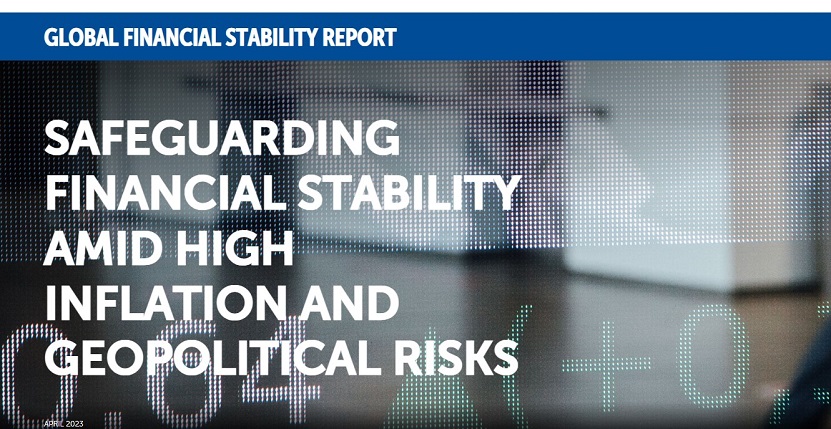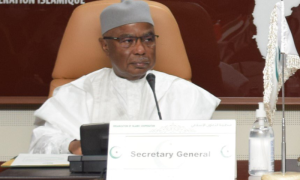A Monetary Framework Tried by Higher Swelling and Interest Rates
Financial solidness dangers have risen essentially as the resilience of the worldwide money-related framework has confronted a number of severe tests since the October 2022 Worldwide Financial Stability Report. In the repercussions of the worldwide monetary emergency, in the midst of amazingly low interest rates, compressed instability, and adequate liquidity, market
participants expanded their exposures to liquidity, term, and credit chance, frequently utilizing monetary use to boost returns—vulnerabilities more than once hailed in past issues of the Global
Financial Stability Report.
The sudden disappointments of Silicon Valley Bank and Signature Bank within the Joined together States, and the misfortune of showcase confidence in Credit Suisse, a Global Systemically Important Bank (GSIB) in Europe, have been an effective update of the challenges posed by the interaction between more tightly financial and financial conditions and the buildup in vulnerabilities.
Opened up by new technologies and the fast spread of data through social media, what at first showed up to be separated occasions within the US banking division rapidly spread to banks and budgetary markets across the world, causing a sell-off of hazard resources. It also driven to a critical repricing of financial arrangement rate expectations, with size and scale comparable to that of Black Monday in 1987.
Policymakers Predicament
The commanding reaction by policymakers to stem systemic risks reduced showcase uneasiness. Within the Joined together States, bank regulators took steps to ensure uninsured stores at the two failed institutions and to supply liquidity through a unused Bank Term Funding Program to avoid encourage bank runs. In Switzerland, the Swiss National Bank given crisis liquidity support
to Credit Suisse, which was at that point taken over by UBS in a state-supported securing. But advertise sentiment remains fragile, and strains are still apparent over a number of teach and
markets, as financial specialists reassess the elemental wellbeing of the financial system.
The crucial address standing up to advertise members and policymakers is whether these later occasions are a precursor of more systemic push that will test the flexibility of the worldwide finan-
cial system—a canary within the coal mine—or essentially the isolated manifestation of challenges from more tightly financial and financial conditions after more than a decade of plentiful liquidity. While there is small doubt that the administrative changes implemented since the worldwide budgetary emergency, particularly at the biggest banks, have made the money related framework for the most part more flexible, concerns remain almost vulnerabilities which will be covered up, not fair at banks but moreover at nonbank money related middle people (NBFIs).
International Financial Finance | April 2023
In the Joined together States, investors’ fears almost misfortunes on interest rate–sensitive resources driven to the keeping money sell-off, particularly for banks with concentrated store bases and huge mark-to-market losses (Figure ES.3). In Europe, the affect was most noteworthy on banks that exchange at critical rebates to their book values, in which there are long-term concerns with respect to benefit and their capacity to raise capital.
Emerging advertise banks show up to have dodged significant losses in their securities portfolios so distant, whereas store funding has been steady. IMF staff gauges that the impact on regula-
tory proportions of unrealized misfortunes in held-to-maturity portfolios for the middle bank in Europe, Japan, and developing markets would likely be unassuming, in spite of the fact that the affect for some other banks can be fabric (Figure ES.4). That said, many countries have moo levels of store protections scope, and emerging advertise banks for the most part have resourceswith lower credit quality than in progressed economies. In expansion, emerging market banks for the most part play a bigger part within the money related system than in progressed economies, so the consequences of banking sector trouble may be more severe.
These occasions have been a update that financing can disappear rapidly in the midst of far reaching misfortune of certainty. Moving designs of deposits over different institutions seem raise financing costs for banks which may confine their capacity to supply credit to the economy. These concerns are particularly germane for US regional banks. With the recent fall in bank value costs, loaning capacity of US banks might decay by nearly 1 percent within the coming year, lessening genuine GDP by 44 premise focuses, all else being rise to.
Report Format
Monetary soundness dangers have expanded quickly as the strength of the worldwide budgetary framework has been tried by higher expansion and fracture risks.
Chapter 1 analyzes the later turmoil within the managing an account segment and the challenges postured by the interaction between more tightly financial and budgetary conditions and the buildup in vulnerabilities since the worldwide monetary emergency. The development of stretch in money related markets complicates the errand of central banks at a time when inflationary weights are demonstrating to be more diligent than expected. Littler and more hazardous rising markets proceed to go up against declining obligation maintainability patterns.
Chapter 2 analyzes nonbank monetary middle people (NBFIs) and the vulnerabilities that can develop from hoisted use, liquidity jumbles, and tall levels of interconnecting. Apparatuses to handle the money related solidness results of NBFI push are proposed, underscoring that coordinate get to to central bank liquidity might demonstrate essential in times of stretch, but executing suitable guardrails is fundamental.
Chapter 3 analyzes the impact of geopolitical pressures on money related fracture and investigates their suggestions for monetary stability—including through potential capital stream inversions, disturbances of cross-border installments, affect on banks’ financing costs, benefit, and credit arrangement, and more constrained openings for worldwide chance expansion. Based on the discoveries, it draws approach suggestions pointed at fortifying money related oversight, building bigger buffers, and upgrading universal participation.
























